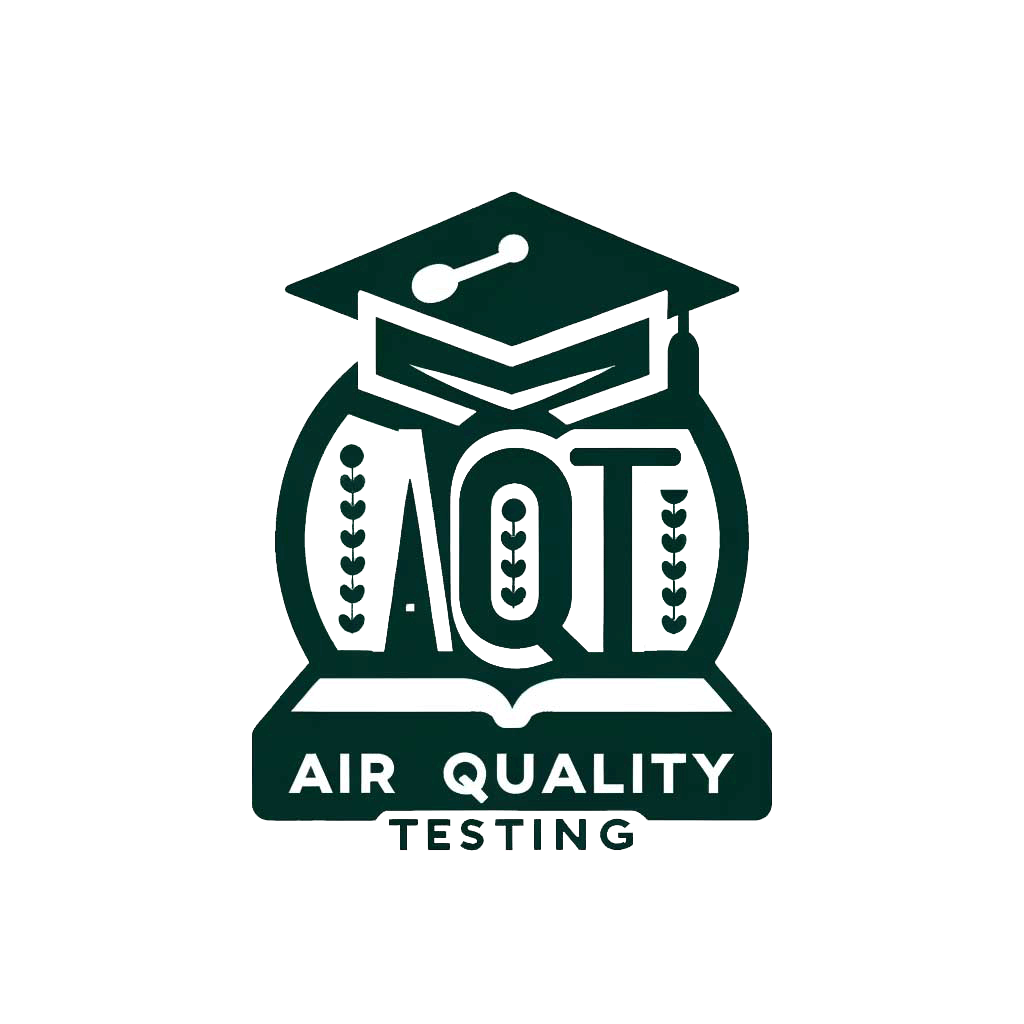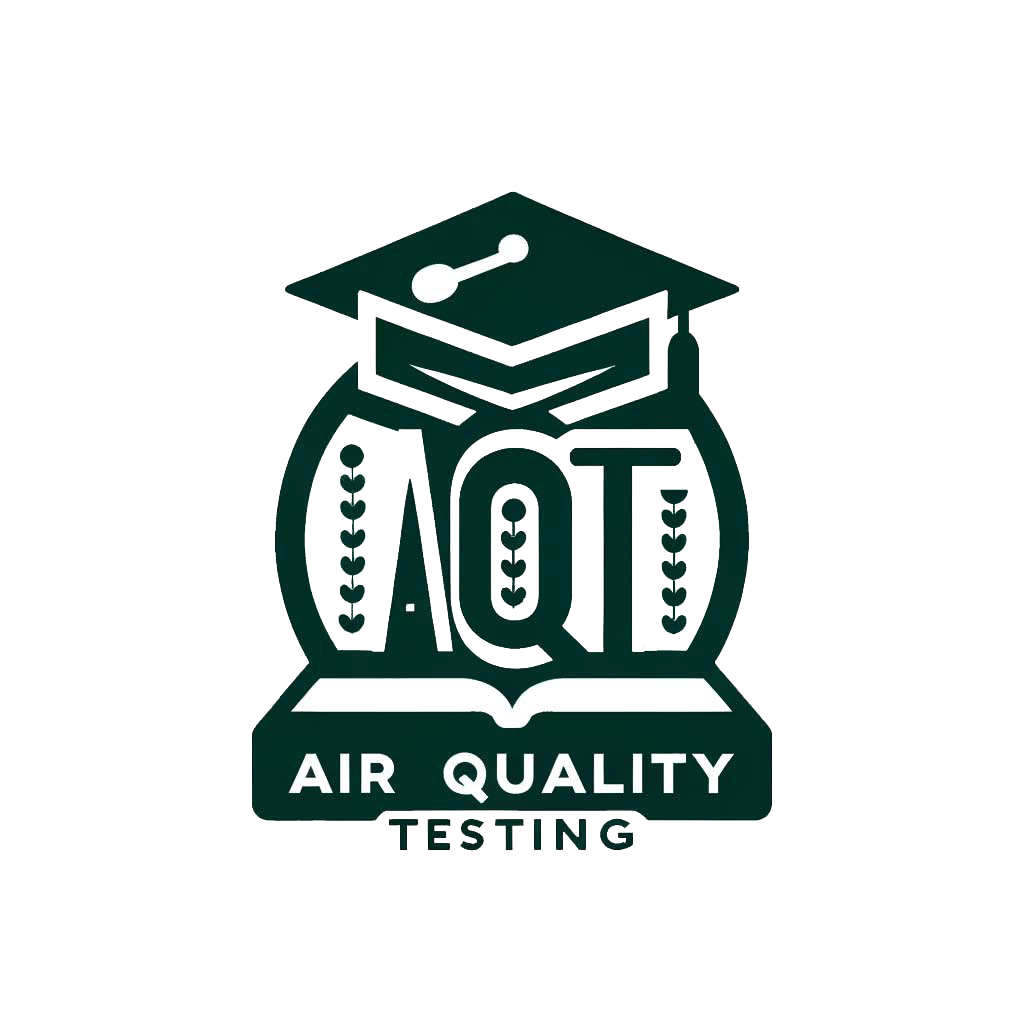Air Quality Testing


DIY Testing
Types of DIY Tests
In the realm of air quality management, DIY testing has emerged as a viable option for individuals looking to assess their indoor environment without the immediate need for professional services. Various commercially available DIY air quality test kits offer the convenience of conducting preliminary assessments at home. These kits vary in complexity and capabilities, allowing users to identify a range of pollutants. Here’s an exhaustive overview of the types of DIY air quality test kits available and what they can detect:
Particulate Matter (PM) Test Kits
- Description: These kits are designed to measure levels of particulate matter, including PM2.5 and PM10. Users can collect air samples over a specified period, then send them to a lab for analysis or use digital monitors that provide real-time readings.
- Capabilities: They can help identify sources of dust, pollen, and other particulate pollutants that may affect respiratory health.
Mold Test Kits
- Description: Mold test kits can range from petri dishes that collect spores over a few days to sophisticated swab kits that allow for instant mold detection on surfaces.
- Capabilities: These kits are crucial for identifying mold spores in the air or on surfaces, which is essential for individuals with allergies or respiratory issues.
VOCs and Formaldehyde Test Kits
- Description: These kits typically involve collecting air samples in a container that is then sent to a laboratory for analysis, although some immediate readout tests are available for specific compounds like formaldehyde.
- Capabilities: They are used to detect the presence of volatile organic compounds and formaldehyde, which can be off-gassed from paints, furniture, and building materials, contributing to poor indoor air quality.
Radon Test Kits
- Description: Available in short-term (days to weeks) and long-term (months) testing options, radon test kits involve placing a passive testing device in the lowest livable area of a home to collect radon gas, which is then sent to a lab for analysis.
- Capabilities: Essential for detecting radon, a colorless, odorless gas that is the second leading cause of lung cancer.
Carbon Monoxide (CO) Detectors
- Description: While not a test kit in the traditional sense, CO detectors are crucial DIY tools for continuous monitoring of carbon monoxide levels in the home.
- Capabilities: These devices provide real-time alerts to dangerous levels of CO, often resulting from faulty appliances or poor ventilation.
Multi-Pollutant Test Kits
- Description: Some comprehensive kits offer the ability to test for multiple pollutants, including VOCs, mold, allergens, and more, using a single sampling device.
- Capabilities: These kits are particularly useful for users seeking a broad overview of their indoor air quality without targeting a specific pollutant.
Considerations for DIY Testing
While DIY air quality test kits offer an accessible starting point for identifying indoor pollutants, it’s important to recognize their limitations. The accuracy of DIY tests can vary, and they may not provide the detailed analysis or expert interpretation offered by professional services. Additionally, understanding how to mitigate identified pollutants may require further consultation.
Choosing the right DIY test kit depends on your specific concerns, whether it’s mold, chemicals, particulates, or gases. By selecting a kit that aligns with your needs and following the instructions carefully, you can gain valuable insights into your indoor air quality and take preliminary steps towards creating a healthier indoor environment.
Limitations of DIY Tests
While DIY air quality testing kits offer a convenient and cost-effective way to assess indoor air pollution, it’s crucial to recognize their limitations. Understanding these can help individuals make informed decisions about when to rely on DIY tests and when it might be necessary to seek professional assessment. Here are key limitations associated with DIY air quality testing:
Accuracy and Reliability
- Calibration and Sensitivity: DIY test kits may not always match the calibration and sensitivity levels of professional-grade equipment. This can result in less accurate measurements, especially for low concentrations of pollutants.
- Consistency: Variability in how samples are collected, stored, and transported (for kits that require lab analysis) can affect the consistency and reliability of results.
Scope and Comprehensiveness
- Limited Pollutants: Many DIY kits are designed to detect specific types of pollutants and may not provide a comprehensive overview of all potential air quality issues. This means significant pollutants could be overlooked if they are not specifically targeted by the test.
- Snapshot in Time: Similar to professional testing but even more pronounced with DIY kits, the results often represent a snapshot in time. Air quality can fluctuate based on various factors like activities within the home, outdoor air quality, and changes in weather, making it challenging to get a full picture from a single test.
Interpretation of Results
- Understanding Data: DIY tests provide raw data, but interpreting these results accurately requires knowledge and expertise. Without a professional’s insight, it may be difficult to determine the severity of pollution levels and the health risks they pose.
- Lack of Context: Professional air quality assessors can offer contextual understanding based on building science, which is critical for accurately identifying sources of pollutants and proposing effective mitigation strategies. DIY tests lack this context, potentially leading to misinterpretation or misdirection in addressing issues.
Actionable Insights and Solutions
- Mitigation Strategies: Identifying pollutants is only the first step in improving indoor air quality. DIY tests may indicate the presence of certain pollutants, but without professional advice, developing effective mitigation or remediation strategies can be challenging.
- Cost Effectiveness: While initially seeming cost-effective, DIY testing could lead to unnecessary spending on ineffective solutions or ignoring serious problems that require professional intervention, ultimately costing more in the long run.
Conclusion
DIY air quality testing kits are valuable tools for gaining initial insights into indoor air quality issues. However, their limitations in terms of accuracy, comprehensiveness, and the need for expert interpretation highlight the importance of using these tests judiciously. They can serve as a preliminary step in identifying potential air quality issues, but for a detailed understanding, accurate measurement, and effective mitigation, consulting with professional air quality testers is advisable. This balanced approach ensures that any actions taken are informed, effective, and contribute to genuinely improving indoor air quality.
Accuracy Considerations
When undertaking DIY air quality testing, accuracy is paramount to ensure reliable results. However, several factors can influence the accuracy of DIY test kits, potentially leading to misinterpretation of the air quality in one’s environment. Here, we delve into key considerations regarding the accuracy of DIY air quality tests, including calibration, user techniques, and the risk of false positives, particularly with cheaper devices.
Calibration and Equipment Quality
- Calibration Issues: Proper calibration of testing devices is crucial for accurate measurements. Many DIY kits, especially lower-cost options available online, may not come adequately calibrated, leading to inaccurate readings. Calibration ensures that the device’s measurements are aligned with standard values, without which the data collected could misrepresent the actual pollutant levels.
- Quality of Equipment: The quality and sensitivity of sensors in DIY kits vary widely. Cheaper kits might lack the precision of professional-grade equipment, affecting their ability to detect lower concentrations of pollutants. This variability can significantly impact the reliability of the test results, potentially underestimating or overestimating air quality issues.
User Technique and Procedure
- Sampling Errors: The accuracy of DIY tests heavily depends on the user’s adherence to the correct sampling techniques. Inconsistent or incorrect sampling methods can introduce errors, such as taking samples in inappropriate locations, at the wrong times, or under varying environmental conditions, all of which can skew results.
- Handling and Storage: For tests that require samples to be sent to a lab for analysis, improper handling and storage can degrade sample quality, leading to inaccurate assessments. This includes exposure to extreme temperatures, contamination, or delays in sample processing.
Risk of False Positives and Negatives
- False Positives: Cheaper DIY kits, easily found online, might have a higher risk of false positives, where the test indicates a problem when there isn’t one. This can lead to unnecessary concern and expenditure on mitigation efforts that aren’t needed. Factors like cross-reactivity of test reagents with non-target substances can contribute to false positives.
- False Negatives: Conversely, the risk of false negatives, where a real issue is not detected by the test, poses a significant concern. False negatives can lead to a false sense of security, potentially leaving harmful pollutants unaddressed.
Conclusion
Accuracy in DIY air quality testing is influenced by a complex interplay of factors, including the quality of the testing kit, calibration, user technique, and the inherent limitations of the tests themselves. While DIY tests can provide valuable initial insights into indoor air quality, these considerations underscore the importance of approaching DIY testing with an understanding of its potential pitfalls. For those seeking precise and comprehensive air quality assessments, professional testing remains the gold standard, offering accuracy, reliability, and the expertise to interpret results and recommend appropriate actions.
When Suitable
DIY air quality testing kits offer a convenient and cost-effective way for individuals to gain insights into the air quality within their homes or offices. While professional testing is often regarded as the gold standard for accuracy and comprehensive analysis, there are specific situations where DIY testing can serve as a helpful starting point or a complementary approach to professional assessments. Here, we explore scenarios where DIY air quality tests are particularly suitable.
Preliminary Assessment
- Initial Screening: DIY tests are valuable for conducting an initial screening of your indoor environment. If you suspect air quality issues but don’t have concrete evidence, a DIY test can provide a first glance at potential problems, helping you decide whether further professional evaluation is needed.
- Identifying Obvious Problems: For easily detectable issues, such as elevated levels of certain pollutants following a known event (e.g., painting, installation of new furniture), DIY tests can confirm suspicions of increased pollutant levels, guiding your next steps in mitigation or the need for professional intervention.
Supplementing Professional Testing
- Between Professional Evaluations: DIY tests can be used in between professional testing sessions to monitor the air quality and detect any significant changes. This approach is particularly useful in environments where air quality can fluctuate, such as homes undergoing renovations or in response to seasonal changes.
- Follow-up After Remediation: After professional remediation work to address specific air quality issues, DIY tests can serve as a follow-up tool to ensure that the measures taken were effective in reducing or eliminating the pollutants.
Educational and Awareness Purposes
- Raising Awareness: Utilizing DIY tests can be an educational experience, increasing awareness about indoor air quality among household members or employees. It can prompt discussions on the importance of maintaining a healthy indoor environment and encourage proactive behaviors to improve air quality.
- Engaging in Citizen Science: For those interested in contributing to broader air quality monitoring efforts, participating in citizen science projects using DIY tests can be a meaningful way to engage with community health and environmental initiatives.
Cost-Effective Monitoring
- Budget Constraints: When budget constraints limit the frequency of professional testing, DIY kits can offer a more affordable method for ongoing monitoring, allowing for periodic checks without the higher cost of professional services.
Conclusion
DIY air quality testing is particularly suitable for initial screenings, ongoing monitoring between professional tests, educational purposes, and situations where budget constraints exist. While it’s important to recognize the limitations of DIY testing in terms of accuracy and comprehensiveness, these tests can play a valuable role in a broader air quality management strategy. They can act as an alert system for potential issues, guide the need for professional testing, and help maintain awareness of indoor air quality over time.
frequently asked questions
How does the number of occupants in a home or building impact indoor air quality and duct cleaning frequency?
The number of occupants significantly affects indoor air quality, with more people leading to faster dust and allergen accumulation. Duct cleaning frequency should be adjusted accordingly.
How does family living, especially with children and pets, affect the need for more frequent duct cleaning?
Families with more occupants, children, and pets might need to consider duct cleaning every 2-3 years to maintain healthy indoor air quality.
In multi-family buildings like condominiums, what factors influence the frequency of duct cleaning?
Centralized HVAC systems in multi-family buildings can accumulate pollutants faster. Building management should consider annual inspections and more frequent cleaning to ensure optimal air quality.
What frequency of duct cleaning is advisable for homes with shared housing arrangements, such as renters or extended family?
Homes with shared living situations might benefit from annual or bi-annual duct cleaning to manage increased activity and maintain a healthier environment.
Why do office buildings with a higher number of employees often require more frequent duct cleaning?
Increased occupancy in office buildings leads to greater air quality challenges due to activity and equipment use. They generally require more frequent cleanings.
What is the recommended duct cleaning frequency for high-traffic commercial spaces like retail stores or restaurants?
High-traffic commercial spaces often need quarterly or bi-annual duct cleaning to ensure a healthy environment and comply with health standards.
Why might schools and educational institutions consider yearly or seasonal duct cleaning?
Schools, with their high occupancy of children susceptible to respiratory issues, may benefit from yearly or seasonal duct cleaning to maintain a healthy learning environment.
How does the seasonal nature of rentals impact duct cleaning frequency?
Properties rented out seasonally may require duct cleaning after a high-traffic rental season to ensure good air quality for the next group of renters.
Why is it crucial to consult with professional duct cleaning services when determining cleaning frequency based on occupancy levels?
Professional services can assess specific conditions and provide expert guidance on the most appropriate cleaning schedule tailored to your situation.



 NADCA
NADCA 


